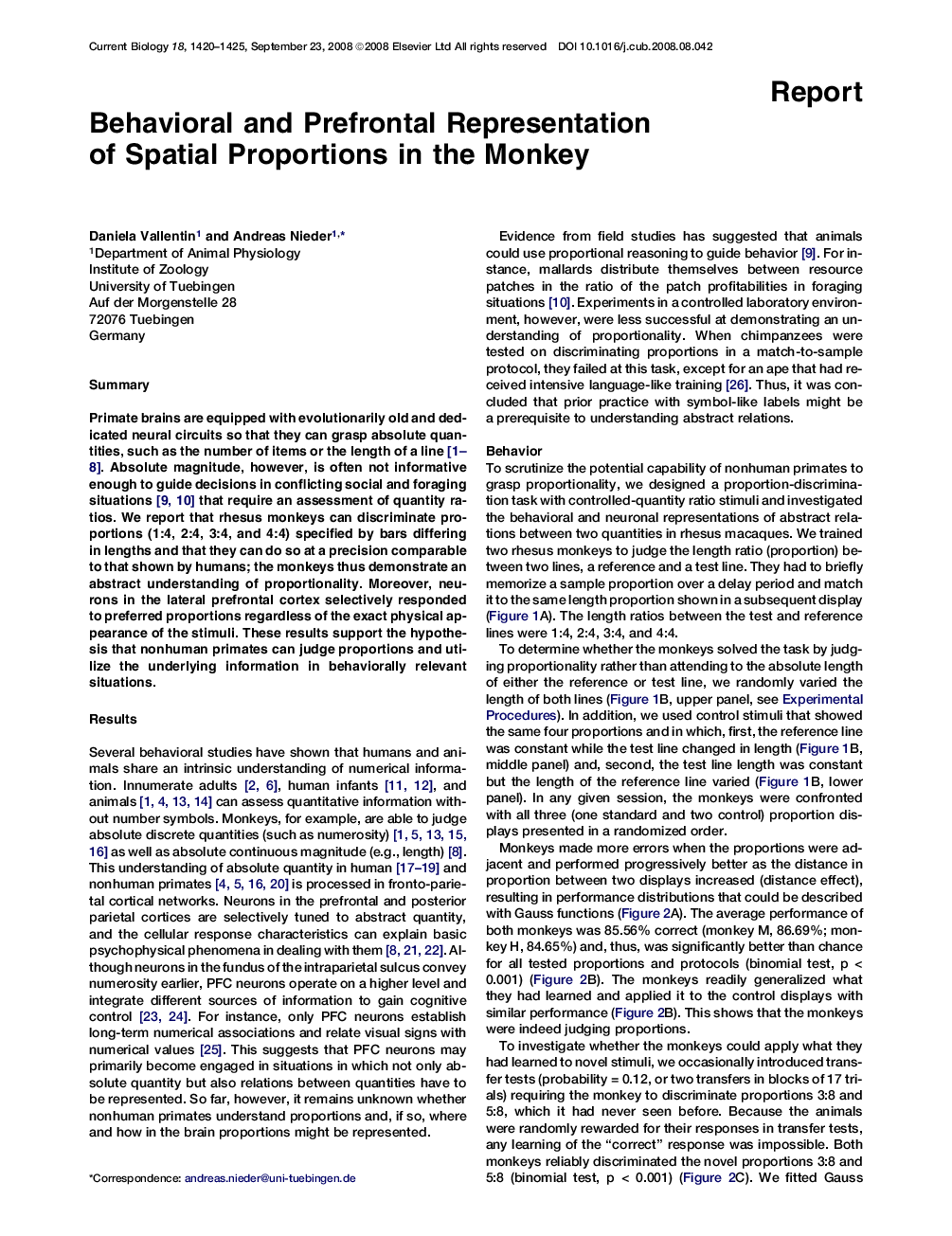| Article ID | Journal | Published Year | Pages | File Type |
|---|---|---|---|---|
| 2043956 | Current Biology | 2008 | 6 Pages |
SummaryPrimate brains are equipped with evolutionarily old and dedicated neural circuits so that they can grasp absolute quantities, such as the number of items or the length of a line 1, 2, 3, 4, 5, 6, 7 and 8. Absolute magnitude, however, is often not informative enough to guide decisions in conflicting social and foraging situations 9 and 10 that require an assessment of quantity ratios. We report that rhesus monkeys can discriminate proportions (1:4, 2:4, 3:4, and 4:4) specified by bars differing in lengths and that they can do so at a precision comparable to that shown by humans; the monkeys thus demonstrate an abstract understanding of proportionality. Moreover, neurons in the lateral prefrontal cortex selectively responded to preferred proportions regardless of the exact physical appearance of the stimuli. These results support the hypothesis that nonhuman primates can judge proportions and utilize the underlying information in behaviorally relevant situations.
